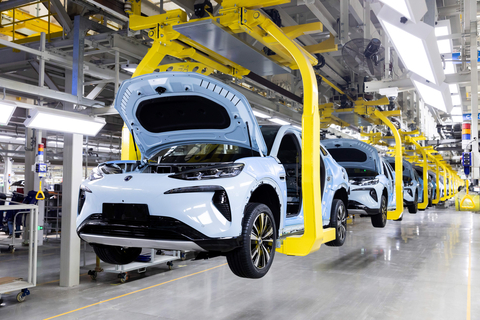EV ownership surges 300% in Oman in one year

The Sultanate of Oman has recorded an unprecedented 300% rise in electric vehicle (EV) ownership in 2024, with registered EVs climbing from 550 in 2023 to 1,500 this year.
Khamis bin Mohammed Al Shamakhi, Undersecretary of Oman’s Ministry of Transport, Communications and Information Technology for Transport, announced this significant milestone during the Second Green Mobility Forum held in Salalah on September 19, 2024.
Al Shamakhi emphasised that green mobility is a central focus of Oman’s sustainable development agenda, aligned with the nation’s vision for reducing carbon emissions by 2050.
He noted that the Omani government has implemented crucial measures to foster this transition, including establishing over 120 EV charging points across the desert nation in 2023, with projections to exceed 200 by year-end and reach 350 by 2027.

In addition to expanding charging infrastructure, the Omani Ministry of Transport, Communications and Information Technology for Transport is working on converting port and airport operations to electric power, promoting eco-friendly initiatives across various sectors.
Government shift
The EV market in Oman is projected to soar from an estimated $217 million in 2024 to a staggering $823 million by 2029. This transformation comes as the Omani government shifts its focus from traditional oil and gas reliance to alternative energy solutions, particularly EVs, amidst declining oil prices.
Highlighting the importance of reducing emissions, Al Shamakhi mentioned local projects such as the innovative Dibba-Lima-Khasab road initiative, which employs electric equipment to minimise carbon output, marking a first in the Middle East.
The Second Green Mobility Forum, a collaborative effort with participants from the Gulf Cooperation Council region, included workshops and dialogue sessions. The focus was on enhancing green mobility through increased adoption of electric and hybrid vehicles.

Discussions also touched on developing a joint platform to streamline access to charging station information, improve user experience, and facilitate EV adoption. This inclusive approach is key to the success of the sustainable transportation movement.
Experts at the forum noted that the declining costs of batteries and the introduction of more EV models, including SUVs with extended ranges, are pivotal in attracting consumers. With expectations that EVs will achieve price parity with traditional internal combustion engines by 2024 or 2025, Oman is poised for a significant shift in its automotive landscape.
Consumer concerns
The recent advancements in charging technology and infrastructure, including requirements for new fuel stations to include EV charging facilities, are expected to alleviate further consumer concerns regarding range anxiety and charging accessibility in Oman.
Recognising the environmental benefits of EVs, which emit zero tailpipe emissions, the Omani government is implementing various incentives, including tax breaks, subsidies, and exemptions for EV purchases. A comprehensive strategy unveiled in January 2024 aims to introduce approximately 22,000 electric vehicles by 2030, with a long-term goal to phase out fossil fuel-powered vehicles by 2050.
While challenges like limited charging infrastructure and high initial costs persist, Omani government support and technological advancements are paving the way for growth. The market focuses on passenger vehicles, with increased consumer awareness driving demand.
In a notable development, the Omani EV manufacturer Mays plans to launch its first model, the Alive 1, by the end of 2024, signalling a significant step toward a sustainable automotive future in Oman. The Omani EV market is also poised for a transformative decade as hybrid electric vehicles (HEVs) also gain traction due to their fuel efficiency and extended range.
Featured image: The EV market in Oman is projected to soar from an estimated $217 million in 2024 to a staggering $823 million by 2029. Credit: Rathaphon Nanthapreecha












